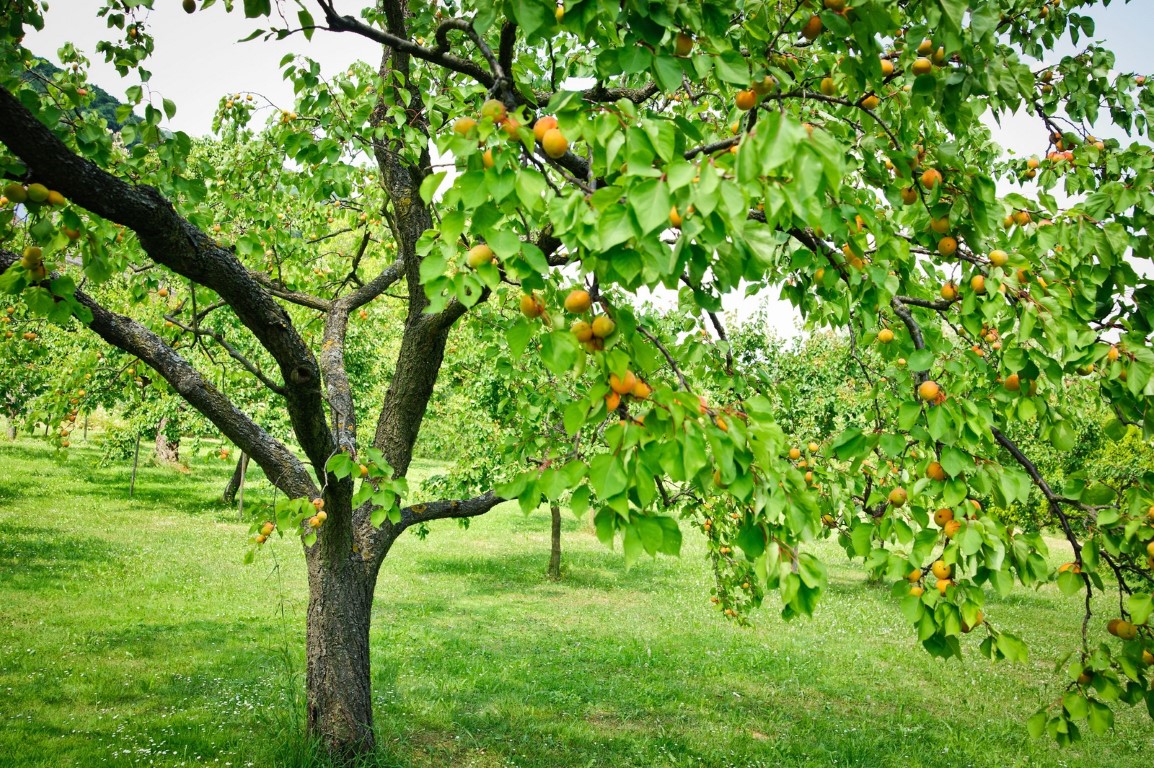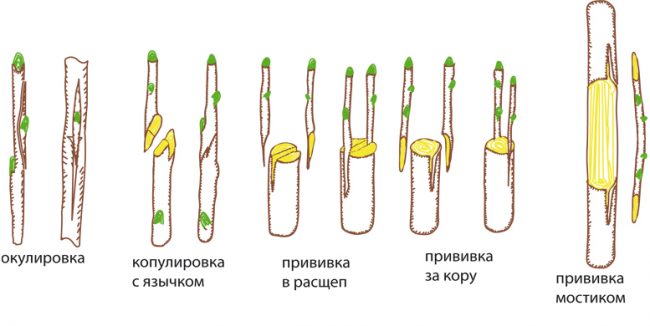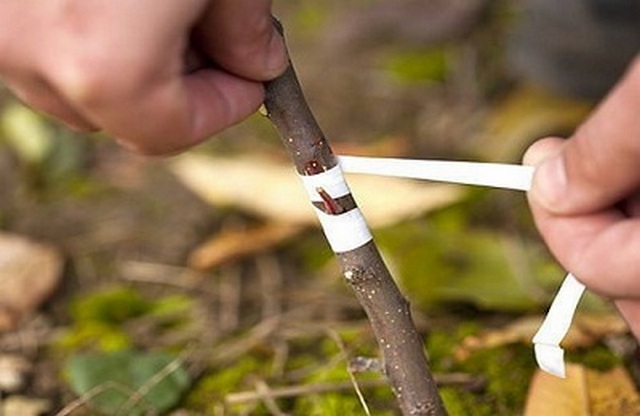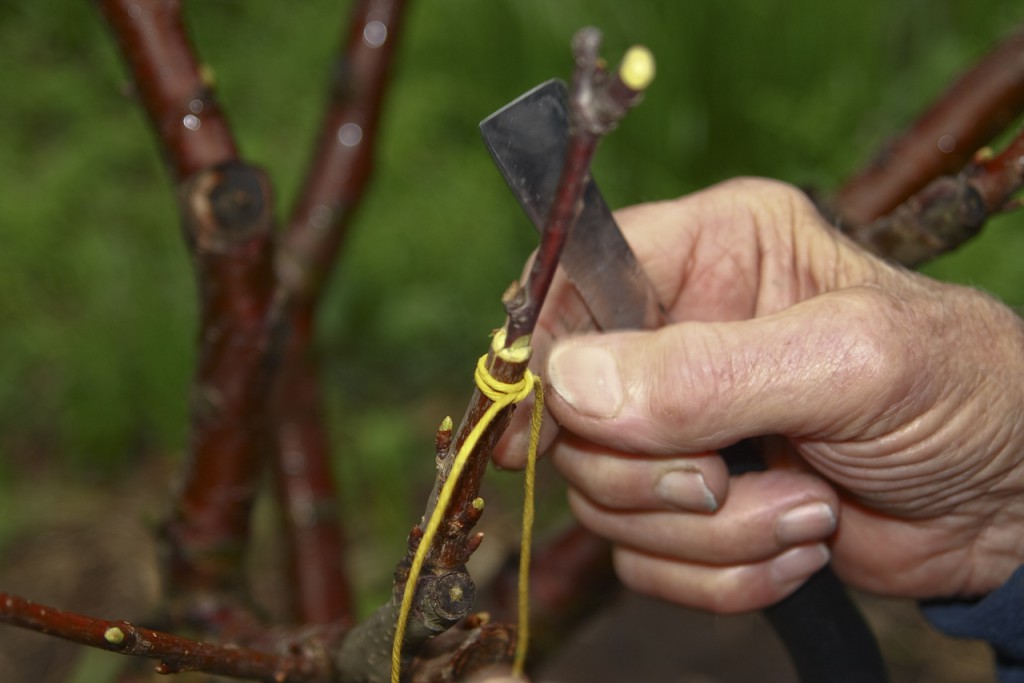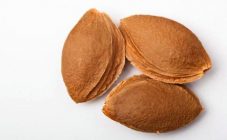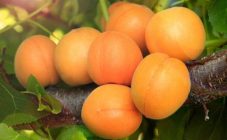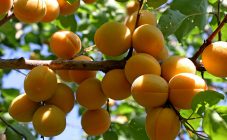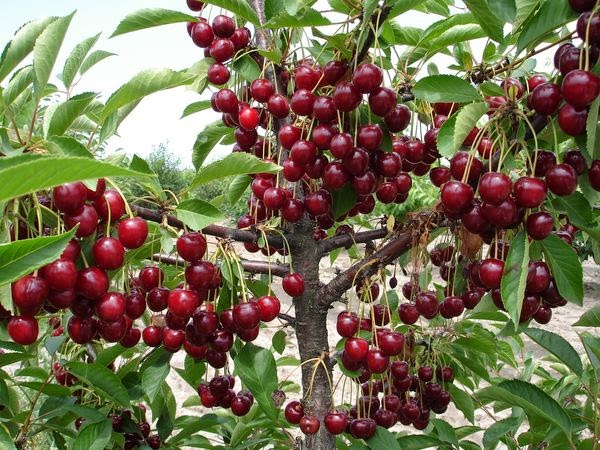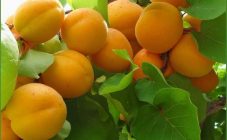Content:
Every gardener should be able to plant trees. At the same time, you should know that this process is quite simple and you can cope with it yourself. Moreover, if he dreams of a good yield of garden trees.
Why vaccination is needed
Grafting a tree, that is, coloration, is the transfer of a small particle of one tree to another, on which the cuts grow together. The end result is a completely new plant, the root system of which remains from one "parent" and ensures the development of the terrestrial part of the second. In addition, a special variety with good characteristics is selected for the second part.
With the help of this operation, a large number of problems on the personal plot are solved. Most importantly, thanks to such processes, the plant begins to bear fruit much earlier than when grown by seed. For this, two, maximum three years are enough. At that time, with seed reproduction, before the first harvest, you need to wait at least ten, or even fifteen years.
With the help of grafting, the gardener gets exactly the apricot variety that he likes best. At the same time, you do not need to buy a varietal seedling, because when you buy you can get a pig in a poke. Here, I took a cutting, and after a few years in the garden you can enjoy delicious fruits.
Having performed this operation, several varieties can be grown on one trunk, than to save the territory in the garden for a greater variety of fruit trees.
The methods of this procedure are different:
- using a cutting;
- kidney.
Grafting by the kidney is called budding, that is, translated from Latin as oculus - the eye. There are several ways of budding:
- Budgeting in the butt;
- Budding by flap with wood;
- Budding with a flap without wood;
- Budding in a T-shaped incision.
Budding is carried out in spring or summer. In the spring, a peephole from a cuttings harvested in the fall is used for the operation. It will take root and begin to actively germinate this year with the beginning of sap flow. The operation is called "budding with a sprouting eye". The summer procedure is carried out using a kidney that was removed from a branch just before the process. The bud will begin to sprout only next spring. This budding is called "sleeping eye budding".
Pros of budding:
- the scion receives a minimum of injury;
- if the operation is unsuccessful, it can be repeated;
- little material is used;
- no need to spend a lot of time during the operation.
Rootstock compatibility with apricot
For apricot grafting to be successful, you need to use trees that are no more than five years old as a rootstock. The trunk diameter must be at least ten centimeters. The ability of trees to reject such processes plays an important role here. The older the tree, the less chances that the scion will take root on it.
Many are interested in the question: "What can be grafted onto an apricot?"If wild is used as a stock, then varietal apricot or peach can be grafted onto it. In this case, a crop is obtained that is resistant to drought and frost. What is the apricot grafted onto, and what is it combined with?
This culture can be grafted not only on a wild type of plant, but also on other stone fruit trees, namely:
- Alych. This rootstock is very strong and auspicious. The fruits grown on such a tree have a sweet taste.
- Plum. This rootstock is ideal for apricots. A selected frost-resistant plum variety allows you to grow a tree that will subsequently tolerate cold weather, and especially temperature drops in spring.
- Tern. This stock is used only by experienced gardeners, as you need to know that this stock has the ability to sprout. It is best used for grafting thorny plants.
- Cherries and cherries. Only some varieties of apricot take root on this rootstock, so it is not recommended to use it for these purposes. In this case, it is possible to graft an apricot stalk only if plum or cherry plum were first grafted onto the cherry tree.
- Peach. This rootstock will also be good for an apricot. But there is one drawback - the peach does not tolerate frost well. Therefore, such vaccination is possible only in the southern regions of the country of Russia.
Therefore, you should not even try to plant stone cuttings on it. If the question arises: "Is it possible to graft an apricot on an apricot?", The answer to it is that in this case the compatibility will be one hundred percent. In addition, the fruit will grow larger, juicy and sweeter.
When vaccinated
All gardeners recognize only spring as the best time for planting fruit trees, since it is at this time that frosts end and sap flow begins. It is no secret that trees such as plum, apple and pear can withstand winter operation perfectly. But apricot is a very fragile crop that is afraid of frost, therefore, it is the spring grafting that is considered the best for it.
Summer grafting of apricot with fresh cuttings is only possible if done in warm regions. It is the long warm weather that makes it possible for the cuttings to take root without problems. It is best if you choose the month of June for this.
For a successful operation, it is necessary to adhere to all the rules, thanks to which the plant will be preserved and quickly take root. First of all, you need to take care of the material. Cuttings are harvested in late autumn. Then they need to be wrapped in plastic wrap and stored directly in the snow. In the spring, the workpieces should be wrapped in a damp cloth and placed in the refrigerator. Before the procedure itself, you need to soak them in water.
How to plant an apricot
There are many ways in which trees can be grafted, among which it should be noted:
- copulation;
- split grafting;
- for the bark.
Copulation is done if the scion and rootstock have an identical cut diameter. In this case, oblique cuts are made, on which "tongues" are made and both parts of the plant are connected. After that, the scion with the stock is tightly pulled together with electrical tape, and the junction is processed with garden varnish. Before starting work, you need to study a step-by-step work plan.
How to plant on wild in spring
In most cases, grafting an apricot on a similar plant will give the grower the best results. Nursery-grown seedlings are used as the basis for this process. The main advantages are:
- the identity of both parts of the vaccine;
- the plant begins to bear fruit very early;
- no root growth.
To work you need to have on hand:
- grafting knife;
- secateurs;
- garden pitch;
- tape for winding.
This crop must be planted well above ground level. The higher the vaccination site rises, the more chances that it will not undercut or freeze.
Plum grafting in summer and spring
For the base, it is best to take a semi-wild plum. Thanks to this, as a result, the gardener will receive a frost-resistant culture. The base should be no more than five years old with a trunk diameter of four to ten centimeters. The operation is done in two ways:
- copulation;
- into cleavage.
The best time for this operation is spring, but it can be done in summer as well. Among the numerous advantages of such grafting, there is one drawback - that in the case of a combination of plum and apricot, the chances of engraftment are much lower.
How to plant on a peach in summer
Peach grafting is more popular in the spring, but at the same time the plant can graft in the summer. The first summer grafting is done in June, the second in July. For this process, you need to select a material that will be identical to the stock. Such varieties as take root best of all:
- "Veteran",
- "Juicy",
- Greensboro,
- Redhaven.
Many are interested in how to graft an adult peach onto an apricot in the summer. The following methods are selected for the operation:
- budding in the crown;
- budding in the butt;
- copulation without a tongue.
Cherry grafting
Cherry grafting is very rarely used by gardeners, since the chances of survival are very low.
Cherry grafting
Sweet cherry is a fruit tree that itself requires grafting. Therefore, it is not recommended to plant an apricot on it. In addition, the branches of the cherry are very fragile, which is unfavorable for the rootstock.
Apple tree grafting
Gardeners do not even try to plant a stone fruit crop on an apple tree, since these two crops are completely different in their physical properties. Moreover, the seed of an apple tree is a seed, not a stone.
Answers on questions
Many novice gardeners living in Central Russia are interested in the following questions.
What to plant an apricot on in the Middle lane
Growing apricots in Central Russia looks like a fairy tale. But thanks to vaccination, it became possible. Trees that are resistant to cold and frost are used as a scion. Plum, blackthorn and cherry plum are perfect for these purposes.
What trees to plant apricots with
Since this culture came to Russia from southern countries, the seedling cannot be planted in a row with such plants as:
- apple trees,
- pears,
- plums,
- peach,
- cherries,
- red rowan,
- cherries,
- nut,
- currant,
- raspberries.
This crop is very sensitive to frost, so grafting must be used to decorate the garden with apricot fruits. In this way, a resistant plant with delicious aromatic fruits can be grown.
